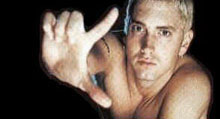Methoden
Die hier beschriebenen Methoden lassen sich bei der Arbeit mit einer Reihe von Medientexten, Film- und Fernsehtexten aber auch Videospielen, effektiv im Unterricht einsetzen. Sie helfen, die Konventionen und Codes der audiovisuellen Gestaltung aufzuzeigen, und die vielfältigen Beziehungen zwischen Text, Produzent und Publikum aufzuzeigen.
Learning Objective
The
number, sequence and duration of shots in a
moving image sequence all contribute to its
meaning and are created in the editing
process.
• Screen time and ‘story time’ are usually different: the editing process ‘manages’ the story time for us.
• Each new shot should provide new information or impressions: shot changes are not merely ‘to keep viewer interest’.
• The pace and rhythm of editing and the types of transition used also contribute to meaning.
• Sound transitions may not match shot transitions: in drama especially they may anticipate them and this can function to
maintain or develop moods such as suspense.
• Certain kinds of shot sequence are highly conventional: eg shot/reverse shot in a conversation or interview; or a character looking off-screen is likely to be followed by a shot of what they are looking at.
• Screen time and ‘story time’ are usually different: the editing process ‘manages’ the story time for us.
• Each new shot should provide new information or impressions: shot changes are not merely ‘to keep viewer interest’.
• The pace and rhythm of editing and the types of transition used also contribute to meaning.
• Sound transitions may not match shot transitions: in drama especially they may anticipate them and this can function to
maintain or develop moods such as suspense.
• Certain kinds of shot sequence are highly conventional: eg shot/reverse shot in a conversation or interview; or a character looking off-screen is likely to be followed by a shot of what they are looking at.
Key Questions
How
long is this sequence? How much ‘story
time’ does it represent?
What new information or impression is each new shot giving us?
What information or impression does each change in sound give us?
Why is this kind of shot transition used? What difference would it make if another type of transition were used?
Why are the shots of this length? Does the overall time-scheme of the shots build up a rhythm or a pattern? What is the effect of this?
•
What new information or impression is each new shot giving us?
What information or impression does each change in sound give us?
Why is this kind of shot transition used? What difference would it make if another type of transition were used?
Why are the shots of this length? Does the overall time-scheme of the shots build up a rhythm or a pattern? What is the effect of this?
•
Spot the Shots
• Nach dem ersten Ansehen einer Filmsequenz raten die SchülerInnen wieviele Einstellung hier verwendet wurden.
• Bei zweiten Ansehen machen sie Notizen zu jeder Einstellung, jedem Schauplatzwechsel und dem Ton (Pause Einstellung verwenden, falls notwendig).
• Beim dritten Ansehen achten sie genau auf die Übergänge (Schnitt, Überlappen, Ausblenden etc.) und ob der Ton an den gleichen Stellen wechselt .
• Die Zeit für jede Einstellung wird gemessen.
Mögliche weitere Übung:
• Zeichnen eines Storyboardes, um die Analyse der Sequenz festzuhalten. Mögliche Variationen der Szene können entwickelt werden: Auslassen von bestimmten Einstellungen, eine Andere Reihenfolge usw.
• Falls Schnittsoftware vorhanden, können die SchülerInnen die Daten digitalisieren und verschiedene Schnittvarianten ausprobieren.
Source: Übersetzt und adaptiert von Moving Images in the Classroom. Bfi British Film Institute
